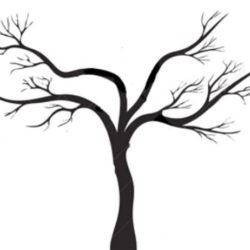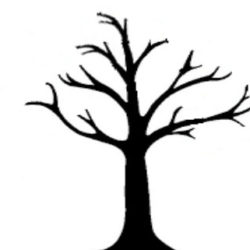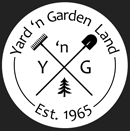Pruning Fruit Trees
Pruning fruit trees is important to the health of the tree and the production of fruit. Pruning allows light to reach the fruit for optimal ripening and promotes air circulation discouraging diseases. Each type of fruit tree has different needs and techniques. This guide will give you some basic information to get you started but you can also refer to more detailed resources online or in books.
Pruners must be sharp and sterilized with alcohol. You can learn how to sharpen your own tools or find a local sharpener. Clean cuts and clean tools minimize damage and disease.
Cuts should be made at a 45-degree angle so water does not collect and promote disease.
Central Leader: the main stem or trunk
Scaffold branches: the lateral primary limbs that form the tree canopy
Unwanted branches include: Water sprouts (suckers), dead, diseased, damaged, crossing, inward pointing and parallel branches
~ Pruning Young Trees ~
The form of a fruit tree is best established while young. Before pruning a young tree, determine whether it will be shaped into an open vase form or a central leader form.
Open Vase Form

The open vase form consists of a trunk that has been cut back with 3 to 5 lateral branches growing out from it. The top of the trunk does not continue to grow straight up. This creates an open shape.
This form is best for PEACH, SOUR CHERRY, JAPANESE PLUM, APRICOOT, FIG AND STANDARD SIZE APPLE VARIETIES.
Creating an Open Vase Form on a Young Tree
After the First Year of Planting: If there is a central leader, cut it back to a healthy bud or lateral branch. Choose 3 to 5 lateral branches to become the scaffold branches. There should be 6 to 8 inches of vertical space between each branch with each evenly spaced and pointing in a different compass direction. The lowest branch should be between 18 and 36 inches from the ground. Remove the remaining lateral branches.
Year Two: Cut 1/2 of the previous year’s growth on the scaffold branches just above a live bud. At this time remove all unwanted branches. These include suckers at the base of the trunk; damaged, dead, diseased branches; and branches that are crossing, pointing inward and parallel/redundant.
Year Three and Beyond: Continue to encourage the open shape by removing unwanted branches while maintaining the 3 – 5 scaffold branches. Every year cut back the scaffold branches by removing 1/3 to 1/2 of the previous year’s growth. Make sure to make an angled cut just above a bud that faces outward and upward. Cut remaining branches so they are within easy reach for harvesting.
Central Leader Form

The central leader form consists of a trunk growing straight upward with several lateral branches: The higher lateral branches are shorter than the lower, creating a pyramid shape. This allows light to reach the lower branches.
This form is best for: PEAR, EUROPEAN PLUM, SWEET CHERRY, PERSIMMON AND DWARF OR SEMI-DWARF APPLE VARIETIES.
Creating a Central Leader Form on a Young Tree
After the First Year of Planting: Your young tree will have a main stem and a few lateral branches growing from it. Cut the main stem by removing 1/3 of the previous season’s growth. Do not cut too short, you want to keep the main leader. Make sure to cut to a bud. This will encourage the lateral branches to grow. Select 3 to 5 lateral branches to become the scaffold branches and cut them by removing 1/2 of the previous season’s growth. The scaffold branches should be about 6 to 8 inches apart vertically and well-spaced around the tree.
Year Two: Cut the central leader as in the previous year to prevent it from growing too tall and taking energy from the other branches. Cut the scaffold branches by removing about 1/3 of the previous season’s growth. You can establish another layer of lateral scaffold branches above the original layer of scaffold branches. These branches should be shorter in length than the layer below so sunlight can reach the bottom layer. At this time, you will also need to prune unwanted branches.
Year Three and Beyond: Cut the central leader to continue encouraging outward growth in the lateral branches and to prevent the tree from getting too tall. Prune lateral branch new growth by 1/3, and remove unwanted branches.
~ Pruning Mature Trees ~
Remove unwanted branches each year to keep a good tree shape and to promote air circulation. Unwanted branches include water sprouts (suckers), branches that are crossing, parallel, pointing inward, dead, diseased and damaged. If you have an overgrown tree that needs to be shaped, you can prune it yourself, but keep in mind it may take 3 to 5 years. You can safely remove about 1/3 of the branches each year. Hire a professional if in doubt.
~ When to Prune ~
Apple, Pear, Fig and Persimmon – Mid-Winter. It is best to do this on a dry day and when temperatures are around 40 degrees. Do not prune in freezing weather.
Sour Cherry and Apricot – Early spring once buds begin to open but after danger of frost has passed.
Sweet Cherry – Mid-summer. Cuts heal quickly in summer preventing disease. Prune on a dry, cool day or in the coolest part of the day.
Peach – Early spring before sap begins running to prevent pest infestation
Plum – Young plums in early spring before bud break. Mature plums in mid-summer. Prune on a dry, cool day or in the coolest part of the day.
~ Summer Pruning ~
Pruning in the summer is an additional option for fruit trees that are pruned in winter and spring. Remove some of the fruits while small and unripe to promote larger growth for fruit left on the tree. To control size of the tree, cut back branches as needed. It is best to cut to a bud or branch.
YARD ‘N GARDEN LAND
1501 NE 102nd Street
Vancouver, WA 98686
360.573.7172
SUMMER STORE HOURS
Monday – Friday: 8:00am – 5:30pm
Saturday: 8:00 – 5:00pm
Sunday: 9:00am – 5:00pm
HOLIDAY HOURS
Please call
